HSBC 2010 Annual Report Download - page 23
Download and view the complete annual report
Please find page 23 of the 2010 HSBC annual report below. You can navigate through the pages in the report by either clicking on the pages listed below, or by using the keyword search tool below to find specific information within the annual report.-
 1
1 -
 2
2 -
 3
3 -
 4
4 -
 5
5 -
 6
6 -
 7
7 -
 8
8 -
 9
9 -
 10
10 -
 11
11 -
 12
12 -
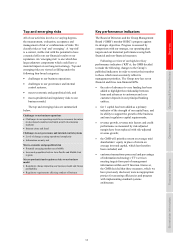 13
13 -
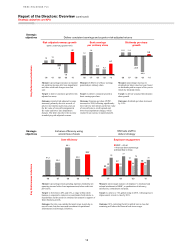 14
14 -
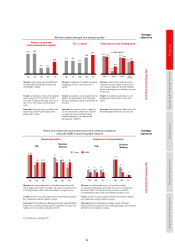 15
15 -
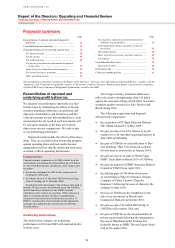 16
16 -
 17
17 -
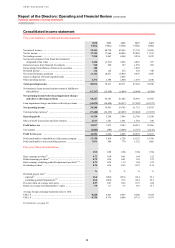 18
18 -
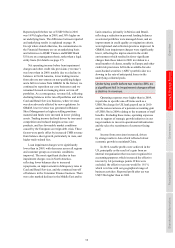 19
19 -
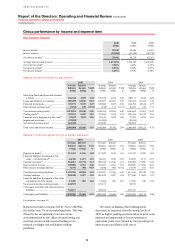 20
20 -
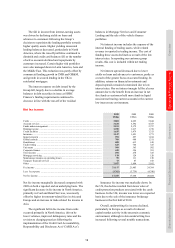 21
21 -
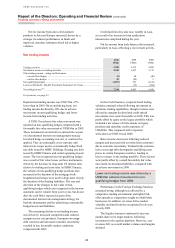 22
22 -
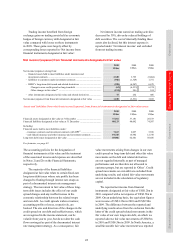 23
23 -
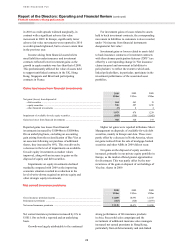 24
24 -
 25
25 -
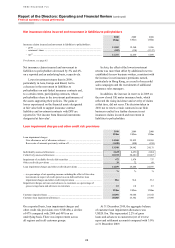 26
26 -
 27
27 -
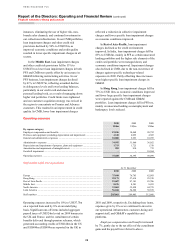 28
28 -
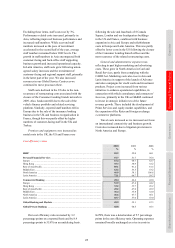 29
29 -
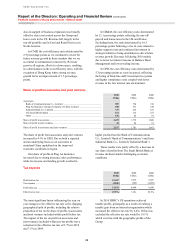 30
30 -
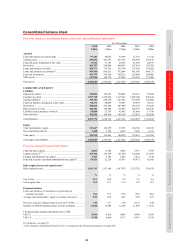 31
31 -
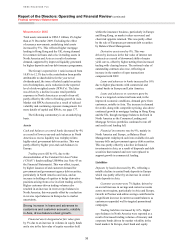 32
32 -
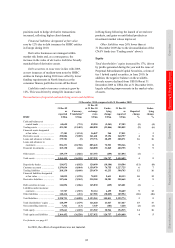 33
33 -
 34
34 -
 35
35 -
 36
36 -
 37
37 -
 38
38 -
 39
39 -
 40
40 -
 41
41 -
 42
42 -
 43
43 -
 44
44 -
 45
45 -
 46
46 -
 47
47 -
 48
48 -
 49
49 -
 50
50 -
 51
51 -
 52
52 -
 53
53 -
 54
54 -
 55
55 -
 56
56 -
 57
57 -
 58
58 -
 59
59 -
 60
60 -
 61
61 -
 62
62 -
 63
63 -
 64
64 -
 65
65 -
 66
66 -
 67
67 -
 68
68 -
 69
69 -
 70
70 -
 71
71 -
 72
72 -
 73
73 -
 74
74 -
 75
75 -
 76
76 -
 77
77 -
 78
78 -
 79
79 -
 80
80 -
 81
81 -
 82
82 -
 83
83 -
 84
84 -
 85
85 -
 86
86 -
 87
87 -
 88
88 -
 89
89 -
 90
90 -
 91
91 -
 92
92 -
 93
93 -
 94
94 -
 95
95 -
 96
96 -
 97
97 -
 98
98 -
 99
99 -
 100
100 -
 101
101 -
 102
102 -
 103
103 -
 104
104 -
 105
105 -
 106
106 -
 107
107 -
 108
108 -
 109
109 -
 110
110 -
 111
111 -
 112
112 -
 113
113 -
 114
114 -
 115
115 -
 116
116 -
 117
117 -
 118
118 -
 119
119 -
 120
120 -
 121
121 -
 122
122 -
 123
123 -
 124
124 -
 125
125 -
 126
126 -
 127
127 -
 128
128 -
 129
129 -
 130
130 -
 131
131 -
 132
132 -
 133
133 -
 134
134 -
 135
135 -
 136
136 -
 137
137 -
 138
138 -
 139
139 -
 140
140 -
 141
141 -
 142
142 -
 143
143 -
 144
144 -
 145
145 -
 146
146 -
 147
147 -
 148
148 -
 149
149 -
 150
150 -
 151
151 -
 152
152 -
 153
153 -
 154
154 -
 155
155 -
 156
156 -
 157
157 -
 158
158 -
 159
159 -
 160
160 -
 161
161 -
 162
162 -
 163
163 -
 164
164 -
 165
165 -
 166
166 -
 167
167 -
 168
168 -
 169
169 -
 170
170 -
 171
171 -
 172
172 -
 173
173 -
 174
174 -
 175
175 -
 176
176 -
 177
177 -
 178
178 -
 179
179 -
 180
180 -
 181
181 -
 182
182 -
 183
183 -
 184
184 -
 185
185 -
 186
186 -
 187
187 -
 188
188 -
 189
189 -
 190
190 -
 191
191 -
 192
192 -
 193
193 -
 194
194 -
 195
195 -
 196
196 -
 197
197 -
 198
198 -
 199
199 -
 200
200 -
 201
201 -
 202
202 -
 203
203 -
 204
204 -
 205
205 -
 206
206 -
 207
207 -
 208
208 -
 209
209 -
 210
210 -
 211
211 -
 212
212 -
 213
213 -
 214
214 -
 215
215 -
 216
216 -
 217
217 -
 218
218 -
 219
219 -
 220
220 -
 221
221 -
 222
222 -
 223
223 -
 224
224 -
 225
225 -
 226
226 -
 227
227 -
 228
228 -
 229
229 -
 230
230 -
 231
231 -
 232
232 -
 233
233 -
 234
234 -
 235
235 -
 236
236 -
 237
237 -
 238
238 -
 239
239 -
 240
240 -
 241
241 -
 242
242 -
 243
243 -
 244
244 -
 245
245 -
 246
246 -
 247
247 -
 248
248 -
 249
249 -
 250
250 -
 251
251 -
 252
252 -
 253
253 -
 254
254 -
 255
255 -
 256
256 -
 257
257 -
 258
258 -
 259
259 -
 260
260 -
 261
261 -
 262
262 -
 263
263 -
 264
264 -
 265
265 -
 266
266 -
 267
267 -
 268
268 -
 269
269 -
 270
270 -
 271
271 -
 272
272 -
 273
273 -
 274
274 -
 275
275 -
 276
276 -
 277
277 -
 278
278 -
 279
279 -
 280
280 -
 281
281 -
 282
282 -
 283
283 -
 284
284 -
 285
285 -
 286
286 -
 287
287 -
 288
288 -
 289
289 -
 290
290 -
 291
291 -
 292
292 -
 293
293 -
 294
294 -
 295
295 -
 296
296 -
 297
297 -
 298
298 -
 299
299 -
 300
300 -
 301
301 -
 302
302 -
 303
303 -
 304
304 -
 305
305 -
 306
306 -
 307
307 -
 308
308 -
 309
309 -
 310
310 -
 311
311 -
 312
312 -
 313
313 -
 314
314 -
 315
315 -
 316
316 -
 317
317 -
 318
318 -
 319
319 -
 320
320 -
 321
321 -
 322
322 -
 323
323 -
 324
324 -
 325
325 -
 326
326 -
 327
327 -
 328
328 -
 329
329 -
 330
330 -
 331
331 -
 332
332 -
 333
333 -
 334
334 -
 335
335 -
 336
336 -
 337
337 -
 338
338 -
 339
339 -
 340
340 -
 341
341 -
 342
342 -
 343
343 -
 344
344 -
 345
345 -
 346
346 -
 347
347 -
 348
348 -
 349
349 -
 350
350 -
 351
351 -
 352
352 -
 353
353 -
 354
354 -
 355
355 -
 356
356 -
 357
357 -
 358
358 -
 359
359 -
 360
360 -
 361
361 -
 362
362 -
 363
363 -
 364
364 -
 365
365 -
 366
366 -
 367
367 -
 368
368 -
 369
369 -
 370
370 -
 371
371 -
 372
372 -
 373
373 -
 374
374 -
 375
375 -
 376
376 -
 377
377 -
 378
378 -
 379
379 -
 380
380 -
 381
381 -
 382
382 -
 383
383 -
 384
384 -
 385
385 -
 386
386 -
 387
387 -
 388
388 -
 389
389 -
 390
390 -
 391
391 -
 392
392 -
 393
393 -
 394
394 -
 395
395 -
 396
396
 |
 |

21
Overview Operating & Financial Review Governance Financial Statements Shareholder Information
Trading income benefited from foreign
exchange gains on trading assets held as economic
hedges of foreign currency debt designated at fair
value compared with losses on these instruments
in 2009. These gains were largely offset by
corresponding losses reported in ‘Net income from
financial instruments designated at fair value’.
Net interest income earned on trading activities
decreased by 30%, driven by reduced holdings of
debt securities. The cost of internally funding these
assets also declined, but this interest expense is
reported under ‘Net interest income’ and excluded
from net trading income.
Net income/(expense) from financial instruments designated at fair value
2010
US$m
2009
US$m
2008
US$m
Net income/(expense) arising from:
– financial assets held to meet liabilities under insurance and
investment contracts ........................................................................................... 2,349 3,793 (5,064)
– liabilities to customers under investment contracts ........................................... (946) (1,329) 1,751
– HSBC’s long-term debt issued and related derivatives ..................................... (258) (6,247) 6,679
Change in own credit spread on long-term debt ........................................... (63) (6,533) 6,570
Other changes in fair value32 ......................................................................... (195) 286 109
– other instruments designated at fair value and related derivatives .................... 75 252 486
Net income/(expense) from financial instruments designated at fair value .............. 1,220 (3,531) 3,852
Assets and liabilities from which net income/(expense) from financial instruments designated at fair value arose
2010
US$m
2009
US$m
2008
US$m
Financial assets designated at fair value at 31 December .......................................... 37,011 37,181 28,533
Financial liabilities designated at fair value at 31 December .................................... 88,133 80,092 74,587
Including:
Financial assets held to meet liabilities under:
– insurance contracts and investment contracts with DPF33 .................................. 7,167 6,097 5,556
– unit-linked insurance and other insurance and investment contracts ................. 19,725 16,982 12,758
Long-term debt issues designated at fair value .......................................................... 69,906 62,641 58,686
For footnotes, see page 83.
The accounting policies for the designation of
financial instruments at fair value and the treatment
of the associated income and expenses are described
in Notes 2i and 2b on the Financial Statements,
respectively.
The majority of the financial liabilities
designated at fair value relate to certain fixed-rate
long-term debt issues whose rate profile has been
changed to floating through interest rate swaps as
part of a documented interest rate management
strategy. The movement in fair value of these long-
term debt issues includes the effect of our credit
spread changes and any ineffectiveness in the
economic relationship between the related swaps
and own debt. As credit spreads widen or narrow,
accounting profits or losses, respectively, are
booked. The size and direction of the changes in the
credit spread on our debt and ineffectiveness, which
are recognised in the income statement, can be
volatile from year to year, but do not alter the cash
flows envisaged as part of the documented interest
rate management strategy. As a consequence, fair
value movements arising from changes in our own
credit spread on long-term debt and other fair value
movements on the debt and related derivatives
are not regarded internally as part of managed
performance and are therefore not allocated to
customer groups, but are reported in ‘Other’. Credit
spread movements on own debt are excluded from
underlying results, and related fair value movements
are not included in the calculation of regulatory
capital.
We reported net income from financial
instruments designated at fair value of US$1.2bn in
2010 compared with a net expense of US$3.5bn in
2009. On an underlying basis, the equivalent figures
were income of US$1.3bn in 2010 and US$2.9bn
in 2009. The difference between the reported and
underlying results arises from the exclusion from the
latter of the credit spread-related movements in the
fair value of our own long-term debt, on which we
reported adverse fair value movements of US$63m
in 2010 and US$6.5bn in 2009. In North America, a
small favourable fair value movement was reported
